Luck and Preparation at the Peaks of Otter on the VBWT
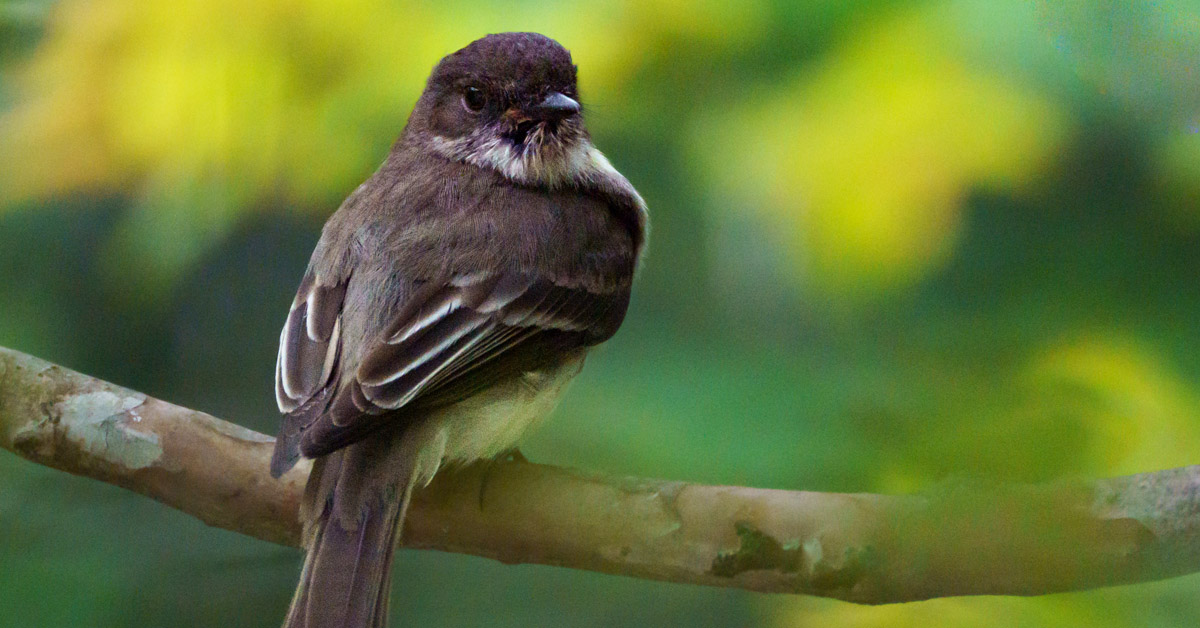
By Blogger Meg Raynes
Photos by Meg Raynes
Having once worked at Grand Caverns in Grottoes, Virginia, I am familiar with the scent of cave air. It is distinct once you know it. That is what first hit me at Natural Bridge State Park when I began my hike down Cedar Creek Trail, on the Peaks of Otter Loop of the Virginia Bird and Wildlife Trail (VBWT), which is in the VBWT’s Mountain Region. I arrived just as the park was opening and, truth be told, I did not plan to arrive on time, so I got lucky!
The morning was a perfect mixture of mist and fog with water droplets decorating leaf and rock alike. After a descent down the steps, past the entrance kiosk, I turned a corner not paying attention to the massive bridge before me. I was too distracted by the birds soaring above the creek. I watched as these winged performers created waves rising and dropping and rising as if bouncing on air.
My gaze was finally broken and climbed 215 feet up to the very top of Natural Bridge. I believe my exact words were, “Oh, wow.” I had seen photos of the bridge, but never experienced it firsthand. A plaque nearby reads: “The most sublime of Nature’s Works,” quoted by Thomas Jefferson, and truly I could not agree more. No wonder there are so many benches available for visitors to sit and take in the awe of such a sight.
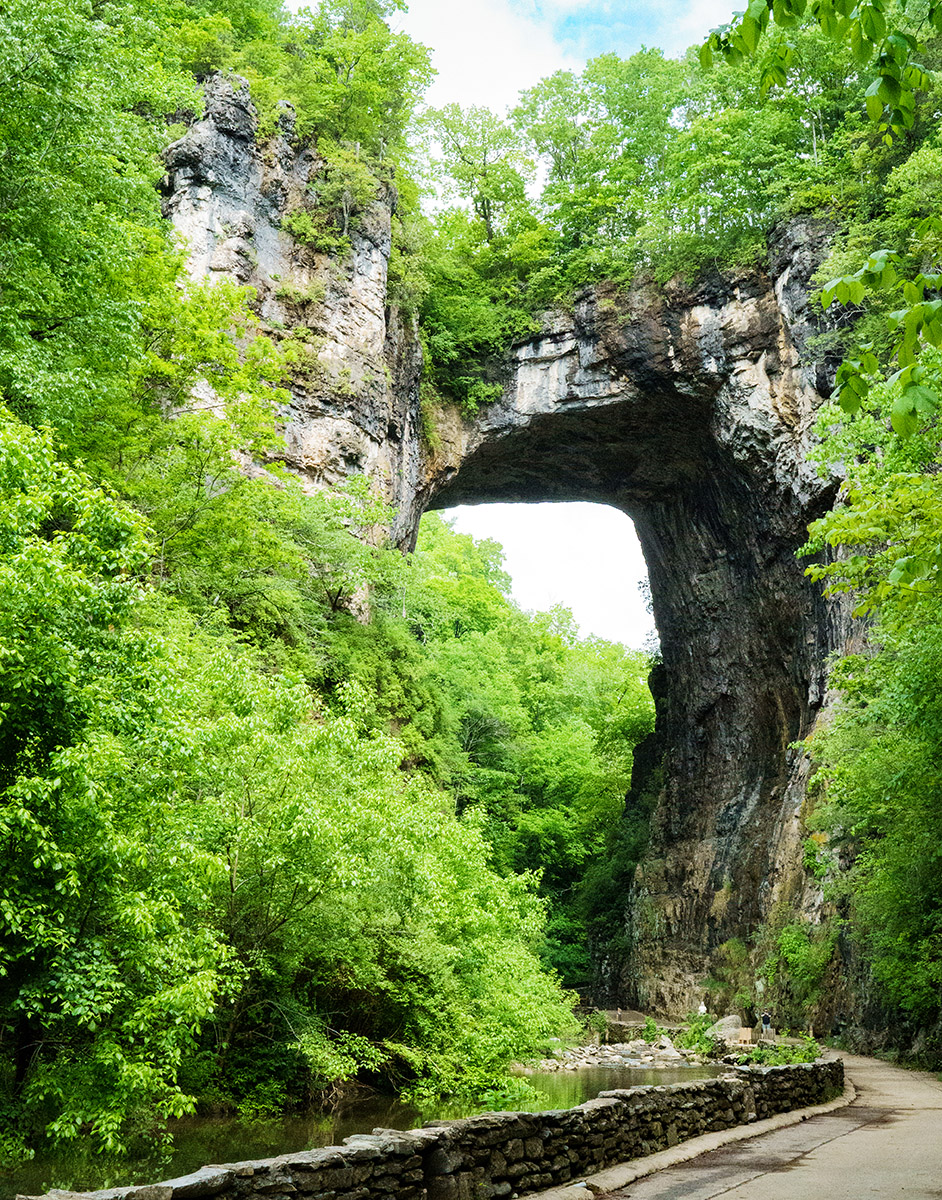
Natural Bridge
Natural Bridge State Park is not just a rock formation in the shape of a bridge. Following Cedar Creek, hikers find an end to the path at Lace Falls. After taking in the beauty of the bridge, I booked it to the falls. My goal was to be the first to arrive, and boy did I succeed. I may have only had around five minutes of solitude, but I’ll take what I can get on a pleasant Saturday morning!
After snapping a few photos of the falls, I was joined by a couple from Ohio. Together, we three watched a feisty duckling swimming against the creek’s current. As more visitors showed up, I joined the couple from Ohio back toward the bridge. We chatted about travels from the past and hopes for future wildlife sightings before parting ways.
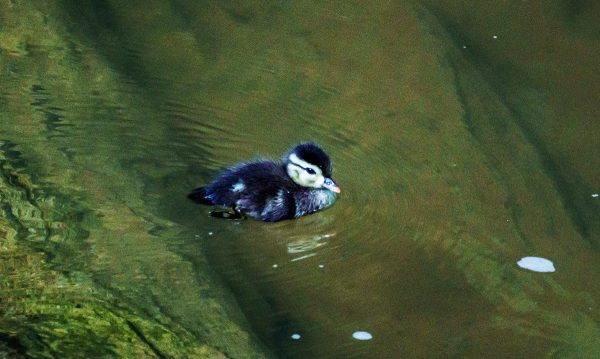
A duckling making its way.
For my next stop, I drove just down the road to The Caverns at Natural Bridge. I, again, got lucky enough to join a group that had just started their tour. We began with a long walk down a tunnel and into the first chamber. The tour guide explained different formations we would see, gave a short overview of the area’s karst topography, and provided true cave darkness by switching off the lights for a moment at the farthest point in our tour. The thought crossed my mind of how I used to get nervous with tour groups at Grand Caverns when a visitor would share that they were once a tour guide. I kept that to myself and reminisced about my time as a guide roughly 15 years ago.
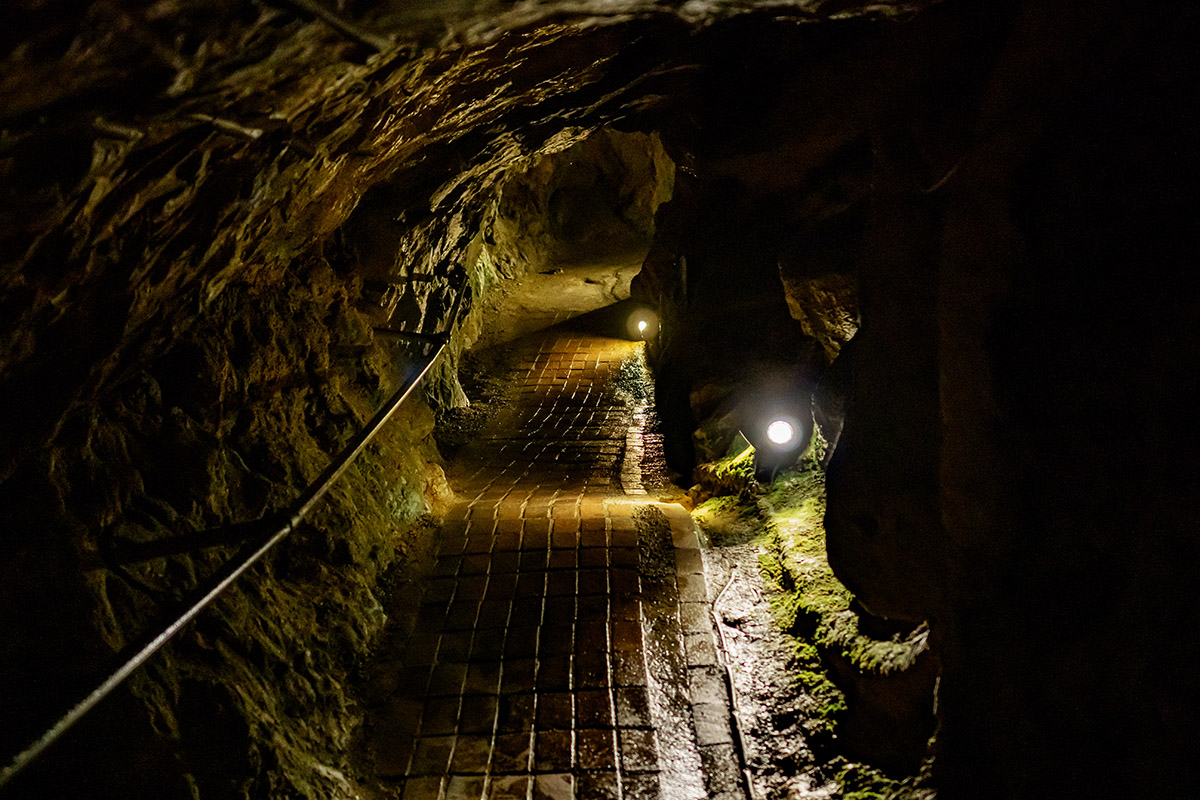
The caverns.
After stopping for a home-cooked lunch at Natty B Cafe, I drove to the Skyline Trail, where I was greeted by a friendly Virginia Department of Conservation and Recreation (DCR) worker. He pointed me in the direction of the trail after explaining a little bit about where I would be going. I climbed up a hill and was met with vast views of blue mountains under puffy cloud-filled skies.
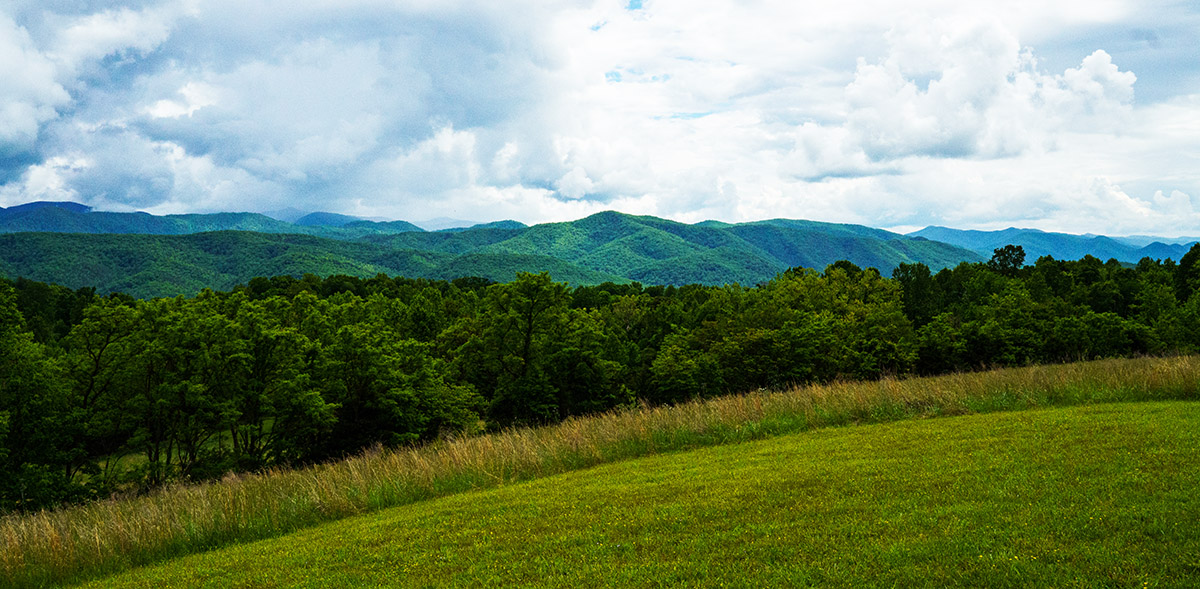
Hiking up and across the grassy path, I passed countless tree swallows. Some were hidden in birdhouses, while others were perched above, proudly showing off their vivid feathers of blue and teal. Turning the last leg of this loop trail, I caught sight of a deer concealed in a wooded area and several bluebirds flitting about the branches just off trail.
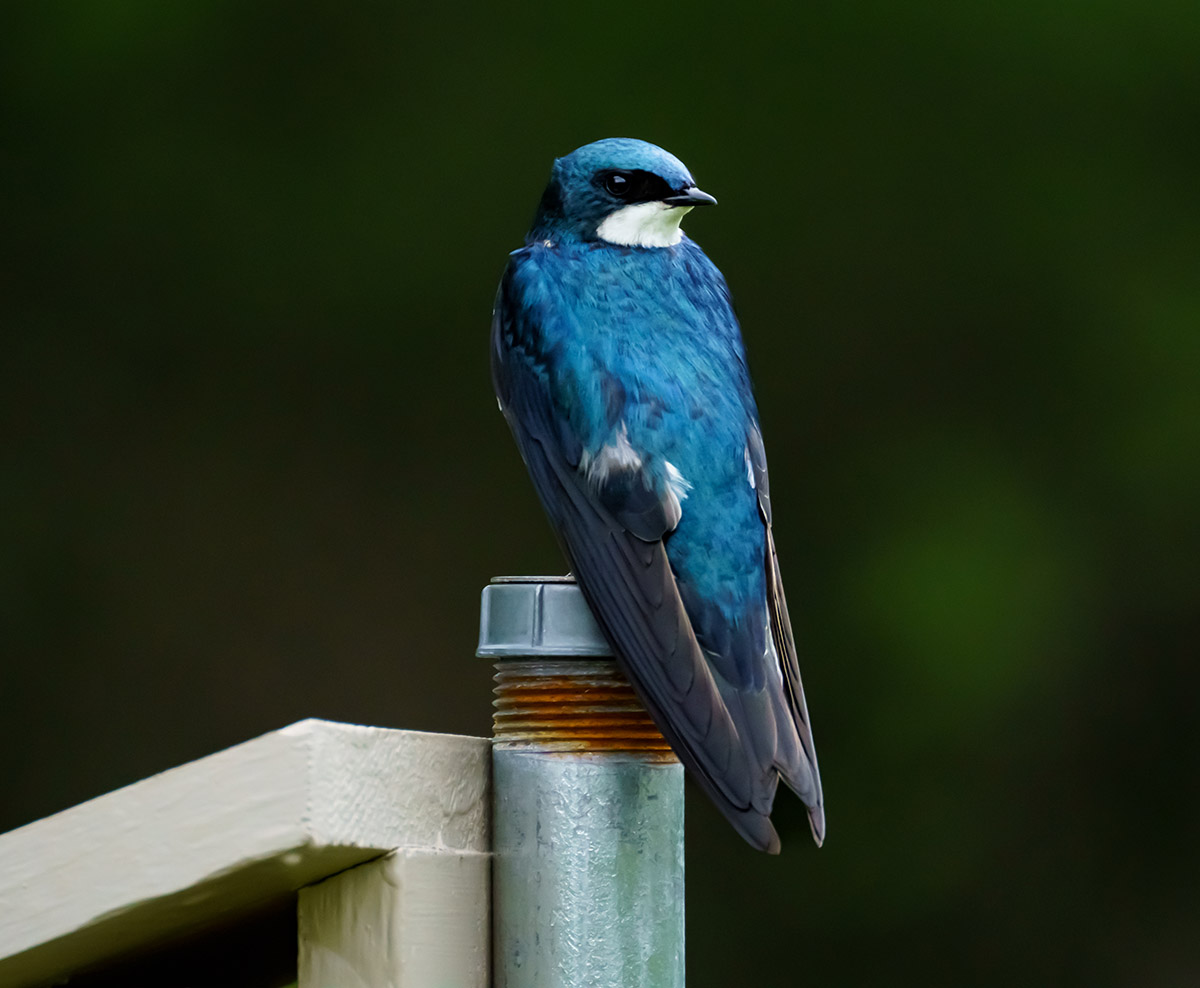
One of the tree swallows I spotted.
My final stop in Natural Bridge State Park was the Blue Ridge Trail—the longest trail in the park at 3.3 miles long. According to the park’s trail map, this location is labeled with a wildlife viewing area. I watched as a hawk flew overhead and listened to frogs croaking beside a pond, including an especially loud bullfrog. After a short break at Red Knob overlook, I descended the trail as it began to rain. Thankfully, I was prepared with a raincoat and quickly pulled it out of my pack to put it on. The rain picked up, as did my pace, and I wondered whether I would catch sight of a rainbow (I sure did, on my way to Peaks of Otter Recreational Area at the Buchanan swinging bridge).
By the time I reached the finish point, my boots had quite a collection of mud gathered at the soles. I was prepared with dry socks packed away for just this sort of occasion! Feeling accomplished after completing three of the four trails in the park, I rewarded myself with a few cookies and set off for Peaks of Otter Recreational Area.
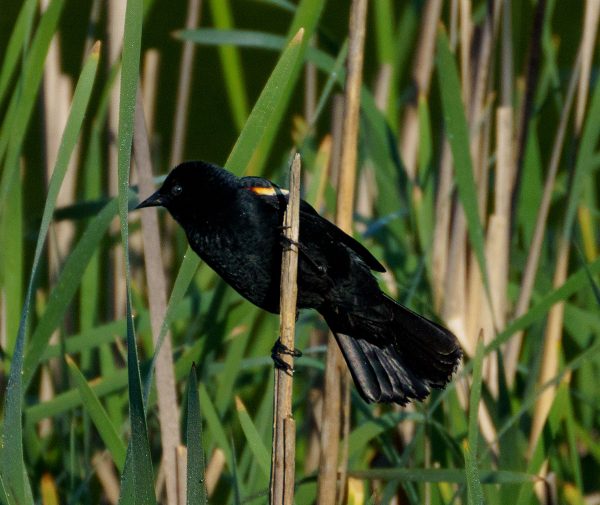
A red-winged blackbird.
I spent the night in the Peaks of Otter Lodge, waking early to see an almost full moon set behind a dip in the mountains. The lodge faces Abbott Lake with a wonderful view of Sharp Top Mountain. Abbott Lake is named after Stanley William Abbott, the landscape architect who designed the Blue Ridge Parkway. The lake is home to many birds who were anything but shy; the quirky calls of red-winged blackbirds filling the morning air. Along this path is Polly Woods Ordinary, a cabin originally built in the early 1800s that once served as a shelter for mountain travelers. Since the building was locked up, I gently peered through a window to see dusty floors and the tiniest of bed frames in a plain and desolate room.
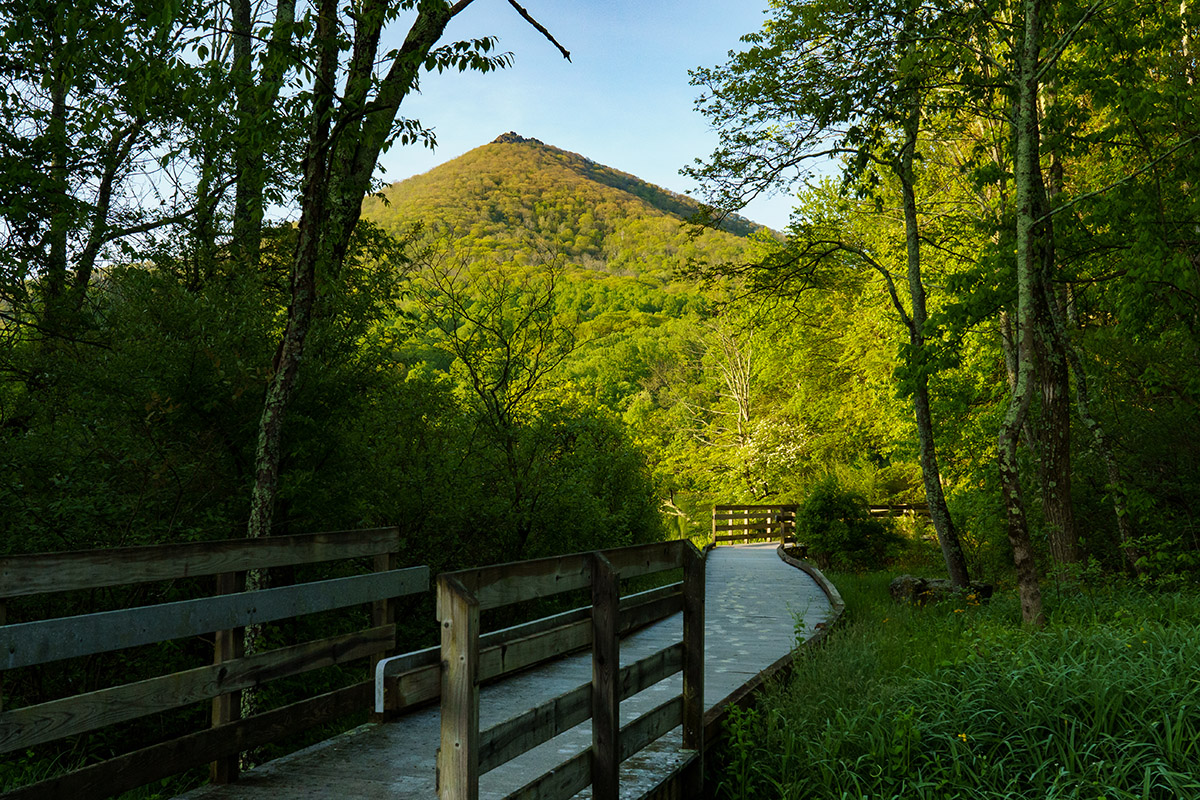
A view of the Peaks of Otter.
The final stop of my weekend adventure on the Peaks of Otter Loop was Claytor Nature Study Center of Lynchburg College. The center is free to the public, with a log for visitors to sign upon arrival and hand-drawn maps available at the kiosk near the parking lot. I explored a few miles of trails that follow Big Otter River, where I counted several snakes basking in the sunlight.
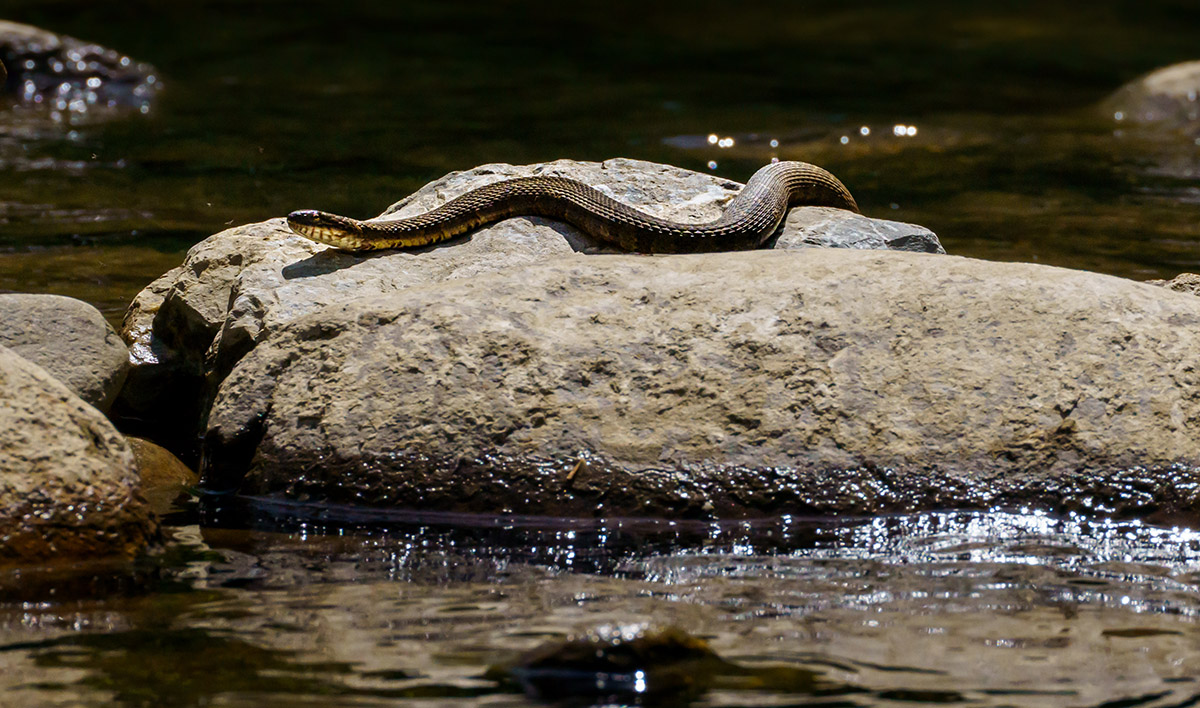
Rounding the Otter Trail, my heart was sent into a frenzy as something unseen thundered through the woods. Thinking the worst, I sternly shouted, “Hey, hey, hey,” only to realize I had startled a small herd of deer who, in turn, startled me right back. I walked over boards through Bog Garden Trail, lined with skunk cabbage, and accepted a sign’s invitation to step inside “The Closet Tree”—an old yellow poplar that stands hollow with space enough for a hiker to fit.
Beside the entrance to the nature center is a fenced garden where I spent the final moments of this weekend’s trip. Rows of plants such as mountain laurel, black-eyed susans, and azaleas decorate this beautiful space along with numerous chatty birds. Sitting under the shade of a white fringetree, I felt only slightly disappointed to not have spotted the endemic Peaks of Otter salamander on this trip. I made myself the promise to return in the hopes that luck would once again be on my side.
Meg Raynes is a hiker, traveler, photographer, and teacher.
If you would like to follow along as she explores the Virginia Bird and Wildlife Trail, then make sure to subscribe to DWR’s Notes From the Field newsletter.
You can see more of Meg’s plant and animal observations during her adventures by following her on iNaturalist.
Follow Meg on Instagram @meg.does.a.hike to see all of her wonderful photography.
